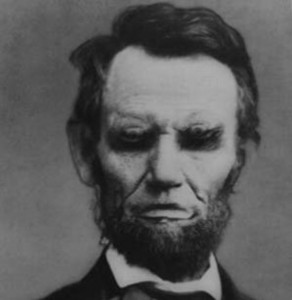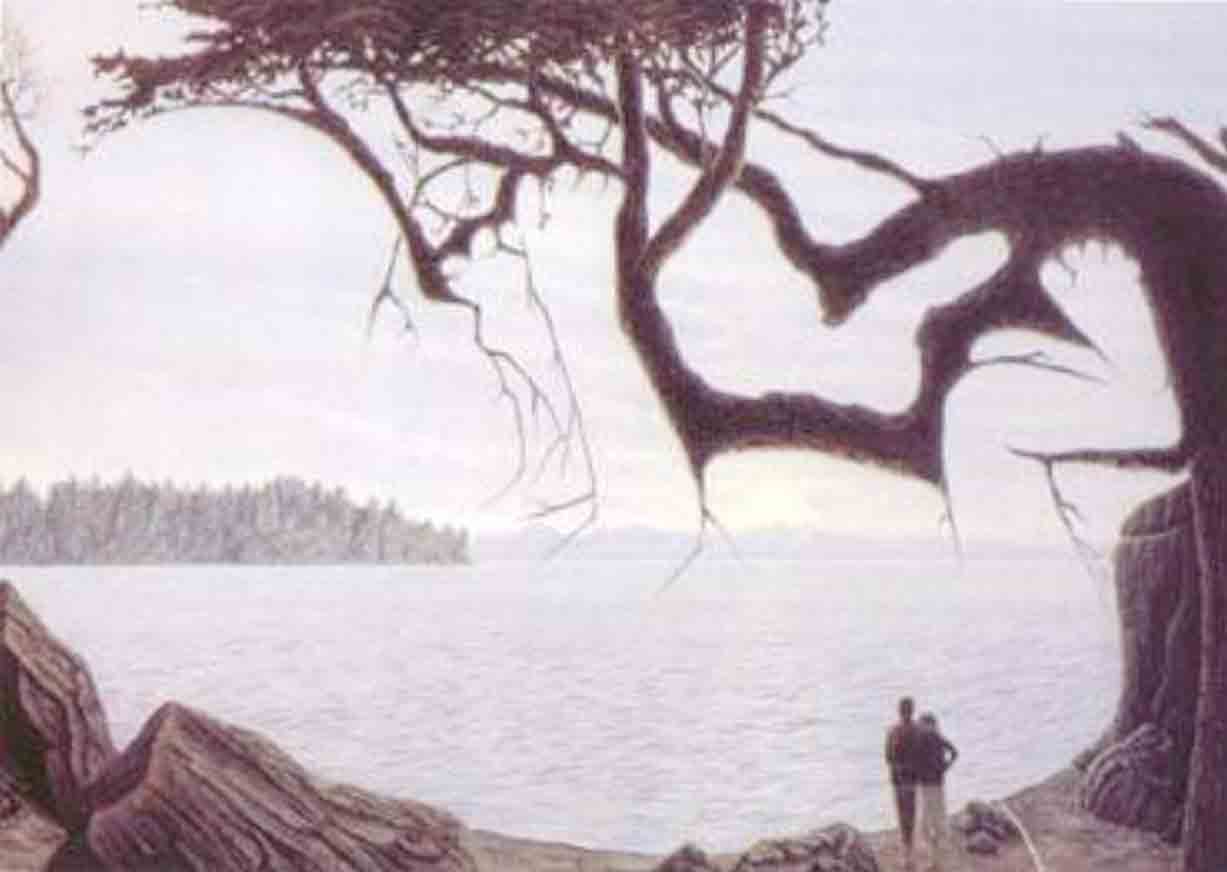Is your brain ready for Monday? Tease your mind with these four optical illusions
 ___
___
A great way to learn more about our brains and minds is to look at how we can trick them–that is, to see how we react to brain teasers and visual illusions.
Below are four fun optical illusions that let us learn about our visual system…ready?
(answers and explanations at the bottom)
___
1. Are the two orange circles above of the same size?
.
2. Are there gray dots at the intersections of the white lines below?

.
3. Does Lincoln’s face look normal?
.
4. Where is the baby?
.
ANSWERS AND EXPLANATIONS
1. The Ebbinghaus Illusion
The two orange circles are exactly the same size, even though the one on the left seems smaller. This size distortion may be caused by the size of the surrounding circles and their distance to the center circle.
.
2. Hermann grid illusion
There are not gray dots in this grid. However “ghostlike” gray blobs are perceived at the intersections of the white lines. The gray dots disappear when looking directly at an intersection.
.
3. Does Lincoln’s face look normal?
It se ems normal but now, look at it upright: Lincoln’s eyes do not look quite right!
ems normal but now, look at it upright: Lincoln’s eyes do not look quite right!
This is how the original image looked like, if seen upright.
Some neurons in the brain seem to specialize in processing faces. And faces are usually seen upright. When presented upside down, the brain no longer recognizes a picture of a face as a face but rather as an object — neurons processing objects are different from those processing faces and not as specialized in face recognition. As a consequence, they (we) do not respond to face distortions as well. This explains why we miss the weird eyes when the face is inverted..
4. Where is the baby?
Another great example of an illusory contour. The baby’s head is on the left, the baby’s feet are against the trunk of the tree on the right..
–> To keep learning about your brain and mind, check out these Top 25 Brain Teasers, Games and Illusions, for Teens and Adults of Any Age.




